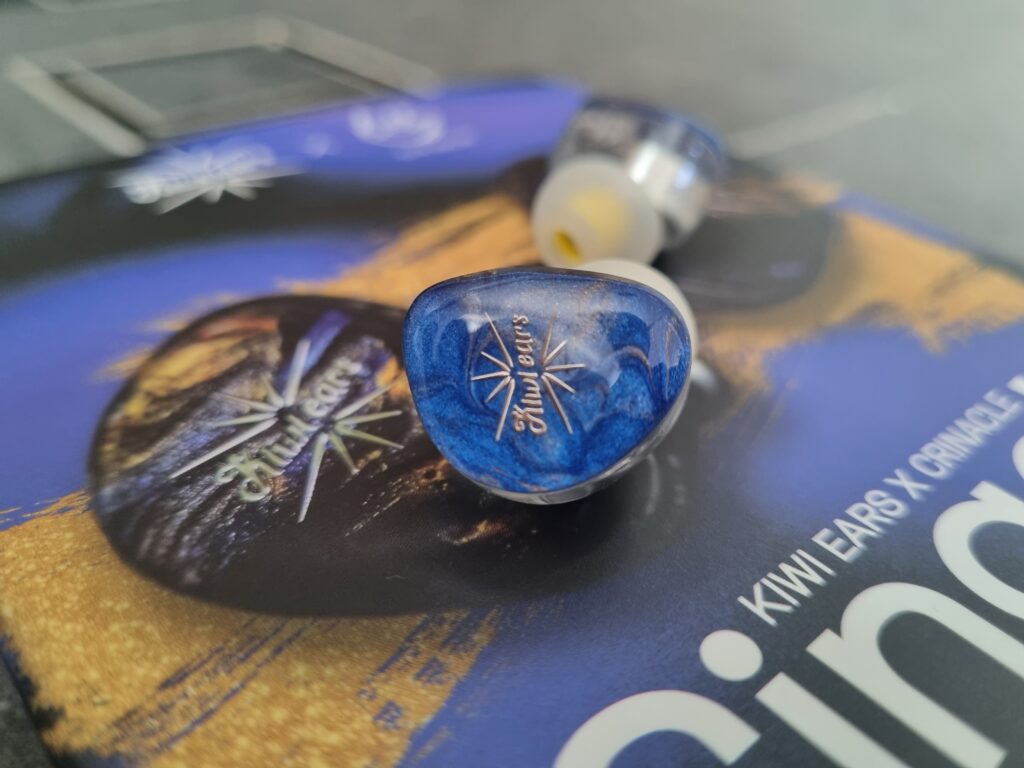Sound Summary

The Singolo is an IEM inspired by yesteryears past. Romanticising the slower PRAT and reverb that echoes centrifugally within orchestral theatres, the intimate staging and syrupy bass shelf accentuate the appeal of vinyl-record nostalgia.
In less technical terms, the Singolo is a neutral-warm IEM with a proclivity for gentler, less edgy notes. Trailing notes in the odd-harmonic regions are troughed to avoid sharpness and sibilance. Mid-bass is satisfying large and slow, with a built-up pressure for a syrupy sweet presentation.
Treble performance is no slouch either, with a fairly forward presentation despite the lifted bass-shelf. Naturally, however, some detectable bleeding still occurs in the upper midrange. However, this rare occurrence only occurs in devilishly bass-heavy music. I would wager that KARS is doing a mighty fine job eliminating these unwanted instances.
Bass
The Singolo’s sub-200Hz bass-shelf is the centrepiece of the FR. Bass shelves (akin to the 7Hz Legato) are niche tunings that appeal to a very narrow segment of the audiophile market. Audible distortion and sub-bass warble are typical artefacts that plague contemporary sound signatures.
I’d wager that Crinnacle deliberately tilted the FR towards an elevation in the sub-bass to showcase KARS’s effectiveness in this single dynamic driver implementation. Tangibly, the sub-bass shelf on the Singolo is presented cleanly with a physical sensation of ‘air’ and ‘body’. This is well-suited towards soft and gentle atmospherics in warmer, older recordings.
The ambience is romantic and soaked in reverb. This isn’t a neutral signature, but it is fairly technical for the price. Especially the fact that the mid-bass is fairly neutral, nor does it mask the midrange (thank you, KARS). However, there is some boxiness and haziness in terms of micro detailing. The bass punch is pillowy and lacks macrodynamic slam by its slower dynamics.
Midrange
The Singolo’s midrange is naturally presented amongst female voicings regarding timbre. However, there is a prevalent recession in terms of its placement amidst the mix. Instrumentation buries the vocals slightly, which results in a perceived loss in overall resolution and clarity. On the plus side, instruments, and brass sections take precedence with great clarity and placement on the stage.
There isn’t much to be said here. Timbre is fantastic at its price point, but the haziness amongst voicings diminishes the Singolo’s potential ‘wow’ factor.
Presence
The treble/presence region on the Singolo is airy, porous and wispy. The pre-requisite shimmer of the ride cymbal or the slide of a violin is presented realistically with minimal exaggeration. The fairly neutral presence region allows for distinctive separation between elements on a stage.
There is detectable roll-off which proves to be a double-edged sword. For one, it tames shouty vocals and harsh brass instruments. On the other hand, the frenetic energy and sparkle is lacking. Sibilance is occasional (a curse of having a rise in the 4kHz region), with resonant peaks enunciating treble glare above my comfort levels.
The Singolo’s treble toes the line between ‘safe’ and ‘technical’.
Soundstaging/Imaging
The Singolo’s lateral staging is above average, with marginal headroom extending beyond the centre image. Staging is still comparatively inward versus an open-back headphone setup. Considering the price point the Singolo inhabits, the Singolo smartly enhances its perceived stage width with an airy presence region, fostering the ideal backdrop for the clear distinction between each voicing and instrument. The Z-axis width is average, with vertical depth between instruments and voicings lacking dimensionality.
Imaging is competitive at the sub-$100 mark on slower, ambience-focused music, with sonic cues being moderately easy to identify amongst the mix. Faster tracks with blazing tempos start to reveal the inherent weaknesses of the Singolo, with cavernous bass drums bleeding into one another, amalgamating into a wall of sound. Because of Singolo’s deep-and-slow sub-bass presentation, separation in the bass section of the frequency response is unimpressive.
A Brief Comparison
Kiwi Ears X Crinnacle Singolo
Price: 79 USD
+Classic ‘resin’ shell lightweight and comfortable
– Sparse accessories package
+ Romantic and lush tonality with neutral-slanting technical performance
+ Slower sub-bass capture but subdued and controlled in the upper frequencies with little bleed.
– Above-average staging but average imaging.
Moondrop LAN
Price: 39 USD
+ Full metal jacket build impervious to physical abuse
+Better accessories package
+ IEF Harman Target Response tuning with a gentle V-shape: Jack of all trades tuning
– Soft sub-bass response with a fairly fast macrodynamic slam. Subjectively too ‘flat’ and ‘lifeless’
– Average staging and imaging.
Conclusive Remarks
The Singolo is a novel experiment driven by the combined curiosities of Kiwi Ears and Crinnacle. KARS technology is still in its infancy, and we have to comprehend the technical possibilities that KARS has to offer to both Kiwi Ears and the consumer. The precision-tuning and attenuation of the sub-bass hump illustrate the inherent power that KARS brings to the table.
There are still the typical technical performance issues and quirks that come with budget-friendly IEMs. But at $79, I would say that the Singolo is a successful litmus test of KARS in a romantic, friendly and inviting sonic package. But only time will tell if the Singolo is the Kiwi Ears’ launchpad towards stratospheric success.



